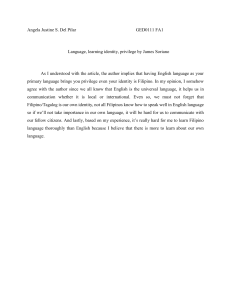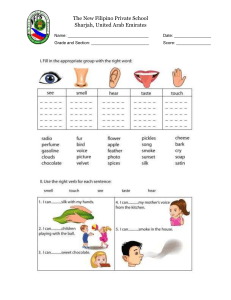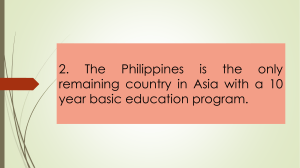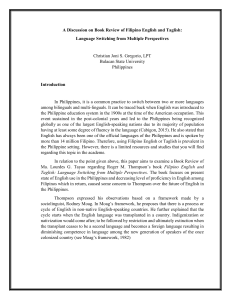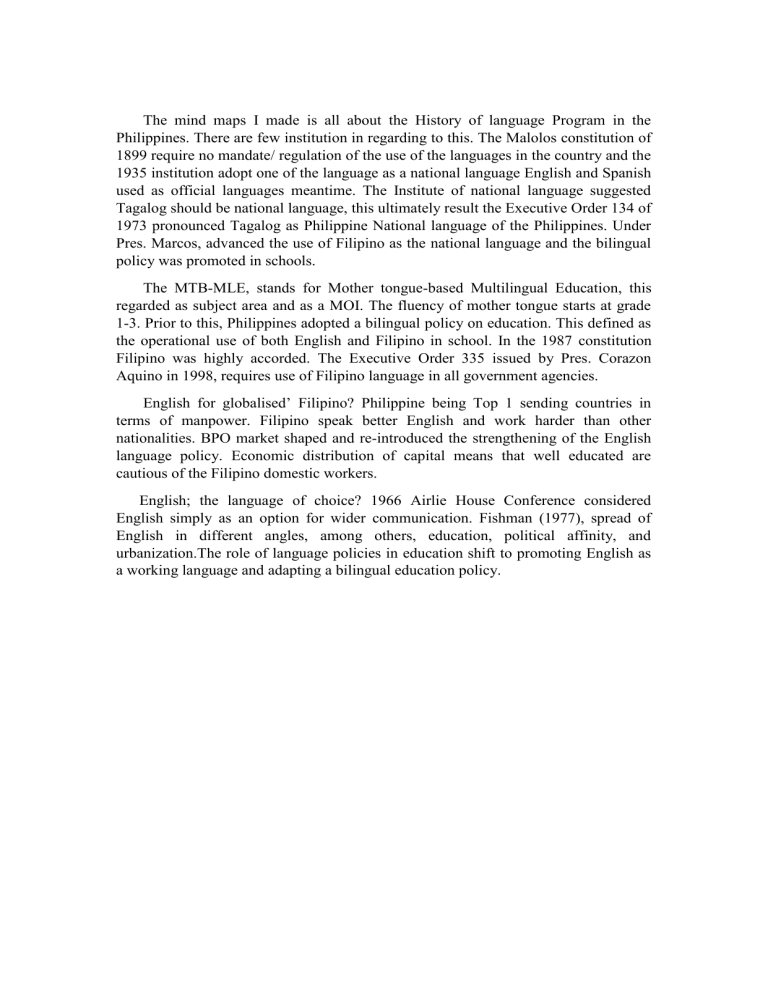
The mind maps I made is all about the History of language Program in the Philippines. There are few institution in regarding to this. The Malolos constitution of 1899 require no mandate/ regulation of the use of the languages in the country and the 1935 institution adopt one of the language as a national language English and Spanish used as official languages meantime. The Institute of national language suggested Tagalog should be national language, this ultimately result the Executive Order 134 of 1973 pronounced Tagalog as Philippine National language of the Philippines. Under Pres. Marcos, advanced the use of Filipino as the national language and the bilingual policy was promoted in schools. The MTB-MLE, stands for Mother tongue-based Multilingual Education, this regarded as subject area and as a MOI. The fluency of mother tongue starts at grade 1-3. Prior to this, Philippines adopted a bilingual policy on education. This defined as the operational use of both English and Filipino in school. In the 1987 constitution Filipino was highly accorded. The Executive Order 335 issued by Pres. Corazon Aquino in 1998, requires use of Filipino language in all government agencies. English for globalised’ Filipino? Philippine being Top 1 sending countries in terms of manpower. Filipino speak better English and work harder than other nationalities. BPO market shaped and re-introduced the strengthening of the English language policy. Economic distribution of capital means that well educated are cautious of the Filipino domestic workers. English; the language of choice? 1966 Airlie House Conference considered English simply as an option for wider communication. Fishman (1977), spread of English in different angles, among others, education, political affinity, and urbanization.The role of language policies in education shift to promoting English as a working language and adapting a bilingual education policy.
